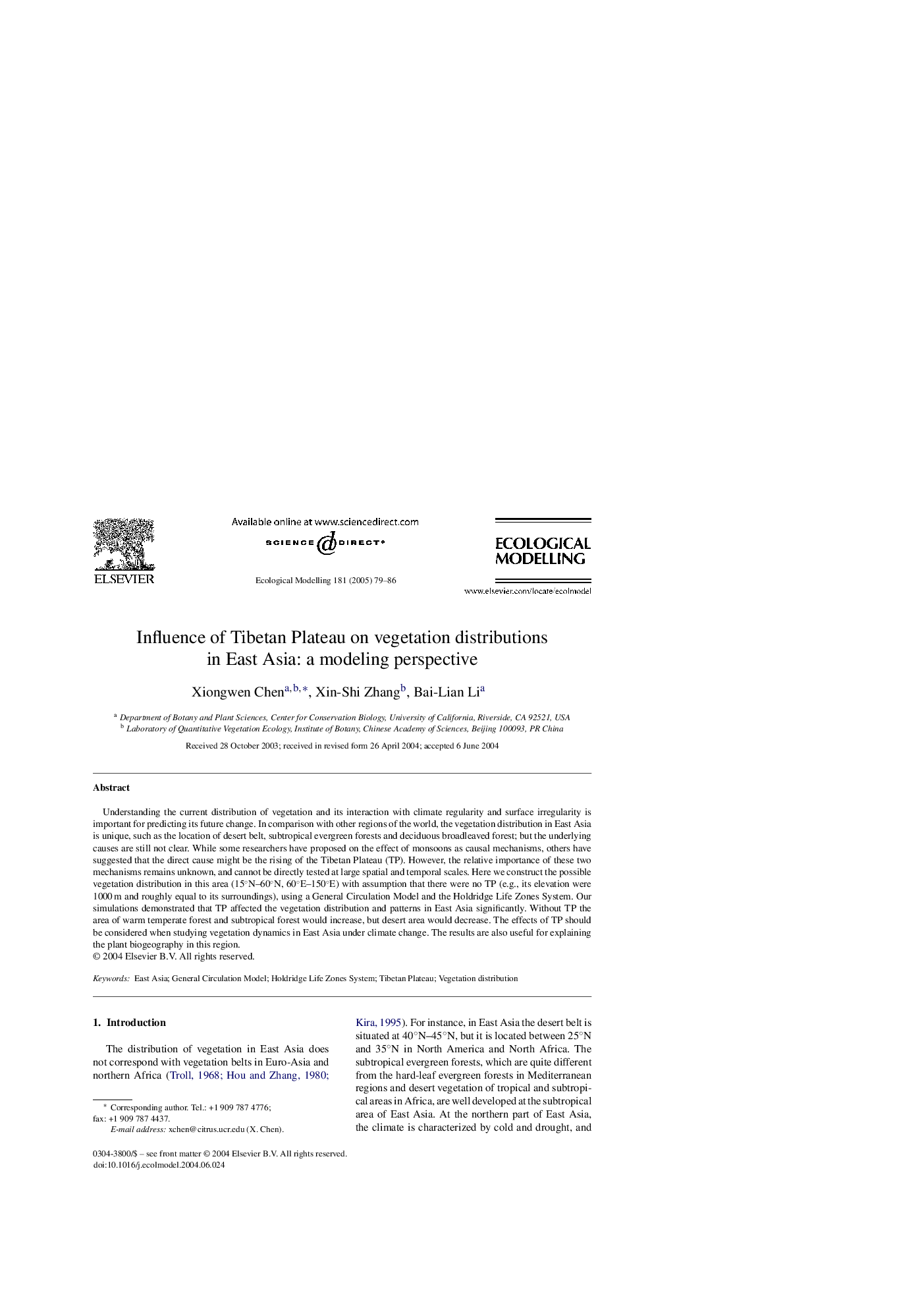| کد مقاله | کد نشریه | سال انتشار | مقاله انگلیسی | نسخه تمام متن |
|---|---|---|---|---|
| 9443658 | 1303545 | 2005 | 8 صفحه PDF | دانلود رایگان |
عنوان انگلیسی مقاله ISI
Influence of Tibetan Plateau on vegetation distributions in East Asia: a modeling perspective
دانلود مقاله + سفارش ترجمه
دانلود مقاله ISI انگلیسی
رایگان برای ایرانیان
کلمات کلیدی
موضوعات مرتبط
علوم زیستی و بیوفناوری
علوم کشاورزی و بیولوژیک
بوم شناسی، تکامل، رفتار و سامانه شناسی
پیش نمایش صفحه اول مقاله

چکیده انگلیسی
Understanding the current distribution of vegetation and its interaction with climate regularity and surface irregularity is important for predicting its future change. In comparison with other regions of the world, the vegetation distribution in East Asia is unique, such as the location of desert belt, subtropical evergreen forests and deciduous broadleaved forest; but the underlying causes are still not clear. While some researchers have proposed on the effect of monsoons as causal mechanisms, others have suggested that the direct cause might be the rising of the Tibetan Plateau (TP). However, the relative importance of these two mechanisms remains unknown, and cannot be directly tested at large spatial and temporal scales. Here we construct the possible vegetation distribution in this area (15°N-60°N, 60°E-150°E) with assumption that there were no TP (e.g., its elevation were 1000 m and roughly equal to its surroundings), using a General Circulation Model and the Holdridge Life Zones System. Our simulations demonstrated that TP affected the vegetation distribution and patterns in East Asia significantly. Without TP the area of warm temperate forest and subtropical forest would increase, but desert area would decrease. The effects of TP should be considered when studying vegetation dynamics in East Asia under climate change. The results are also useful for explaining the plant biogeography in this region.
ناشر
Database: Elsevier - ScienceDirect (ساینس دایرکت)
Journal: Ecological Modelling - Volume 181, Issue 1, 10 January 2005, Pages 79-86
Journal: Ecological Modelling - Volume 181, Issue 1, 10 January 2005, Pages 79-86
نویسندگان
Xiongwen Chen, Xin-Shi Zhang, Bai-Lian Li,